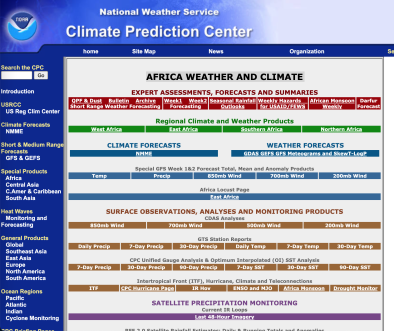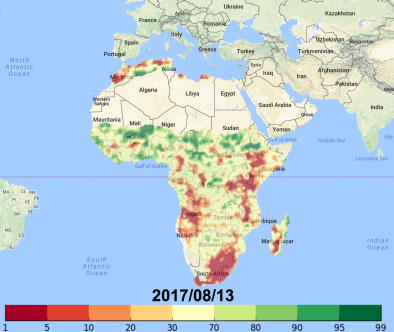Southern African Drought 2015 -
Parts of southern Africa have been affected by consecutive years of abnormally hot weather and below average rainfall that have scorched grazing lands and dried up watering holes since 2015, the driest year on record. Human-caused warming has contributed to ongoing drought conditions. Southern Africa’s temperatures are rising at twice the global average rate, according to the International Panel on Climate Change, and in much of South Africa the level of water in reservoirs is dwindling. In 2015/2016, human-caused warming contributed to droughts in southern African by increasing El Niño sea surface temperatures and local air temperatures, causing reduced rainfall and runoff, and contributing to severe food insecurity.







Climate science at a glance
-
Flash drought over southern Africa was tripled during the last 60 years mainly due to anthropogenic climate change.[4]
-
Climate change intensified heat waves and exacerbated drought during the El Niño years of 2015/16.[4]
-
Global climate models show that most areas in South Africa will shift to an even drier climate in the 2050 and 2080s, increasing the risk of Southern African drought.
Climate change intensifies Southern African drought- and heat-caused food crisis
Millions of people faced hunger and poverty in 2015-2016 due to widespread Southern African drought worsened by El Niño and climate change.[1] Human-caused warming contributed substantially to the very warm 2015/16 El Niño sea surface temperatures, and this contribution likely reduced Southern African rainfall by approximately 24 percent.[2] Runoff reductions were much larger, at 48 percent.[2] These reductions accentuated natural El Niño impacts, and have contributed to substantial food crises.[2]
South Africa, the continent’s largest maize producer, saw its driest year on record in 2015. Maize production in Zimbabwe in 2014–15 was 35 to 38 percent down on a five-year average due to drought.[1] In countries like Malawi and Zimbabwe, small-scale farmers who are entirely dependent on rainfall will struggle to produce any crops this year. The impacts of El Niño are expected to last in Southern Africa until 2017, affecting the food security of 29 million people.
Key crops at risk of annihilation in Africa
Climate change could make it impossible to grow staple crops in some parts of sub-Saharan Africa by the end of the century, according to one study.[3] Up to 60 percent of bean-producing land and 30 percent of maize- and banana-producing areas are projected to become completely unviable, jeopardizing the food supply for tens of millions of people.
Farmers in these areas will likely need to transition to drought-resistant crops and change their agriculture practices within the next ten years to avoid the worst of the devastation. “Time is running out” to transform African agriculture, the study authors warn.
Related Content












